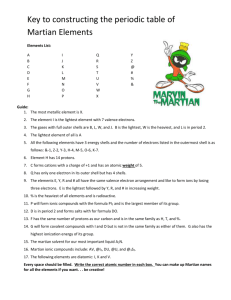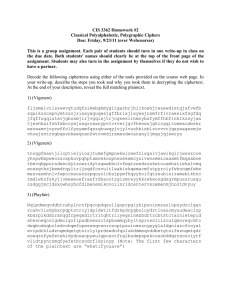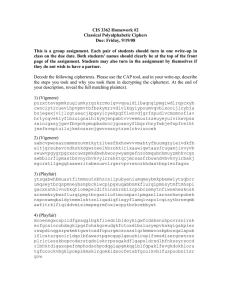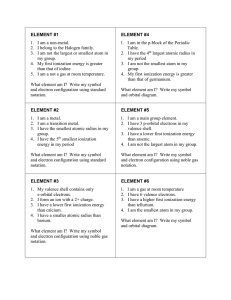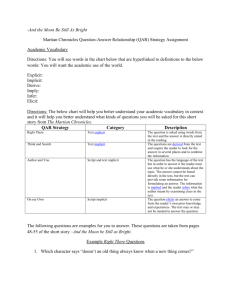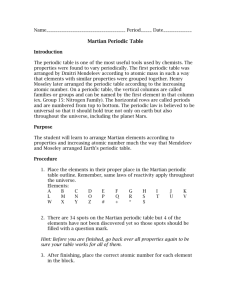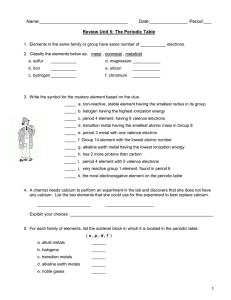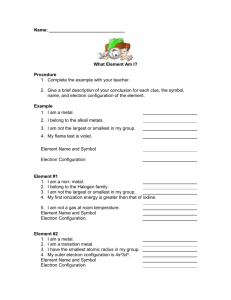Martian Periodic Table Worksheet: Element Properties
advertisement
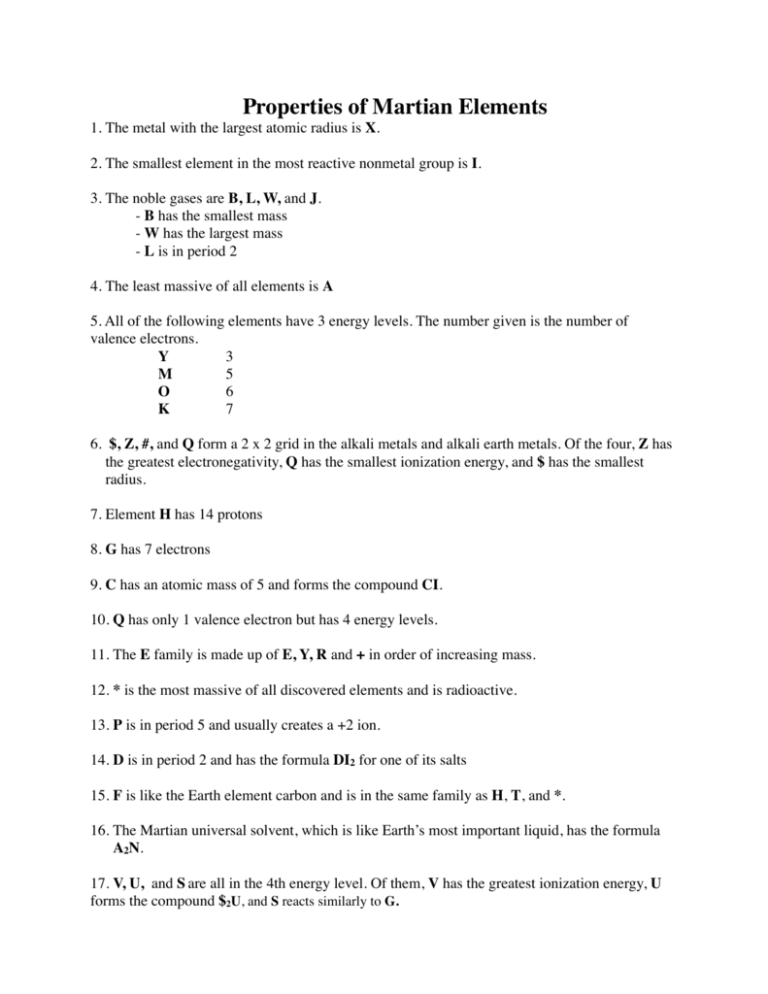
Properties of Martian Elements 1. The metal with the largest atomic radius is X. 2. The smallest element in the most reactive nonmetal group is I. 3. The noble gases are B, L, W, and J. - B has the smallest mass - W has the largest mass - L is in period 2 4. The least massive of all elements is A 5. All of the following elements have 3 energy levels. The number given is the number of valence electrons. Y 3 M 5 O 6 K 7 6. $, Z, #, and Q form a 2 x 2 grid in the alkali metals and alkali earth metals. Of the four, Z has the greatest electronegativity, Q has the smallest ionization energy, and $ has the smallest radius. 7. Element H has 14 protons 8. G has 7 electrons 9. C has an atomic mass of 5 and forms the compound CI. 10. Q has only 1 valence electron but has 4 energy levels. 11. The E family is made up of E, Y, R and + in order of increasing mass. 12. * is the most massive of all discovered elements and is radioactive. 13. P is in period 5 and usually creates a +2 ion. 14. D is in period 2 and has the formula DI2 for one of its salts 15. F is like the Earth element carbon and is in the same family as H, T, and *. 16. The Martian universal solvent, which is like Earth’s most important liquid, has the formula A2N. 17. V, U, and S are all in the 4th energy level. Of them, V has the greatest ionization energy, U forms the compound $2U, and S reacts similarly to G. Martian Periodic Table +1 0 1 +2 +3 +4 -3 -2 -1 2 3 4 5 Martian Periodic Table +1 0 1 +2 2 3 4 5 +3 +4 -3 -2 -1
